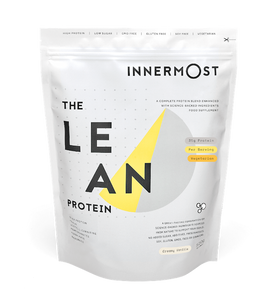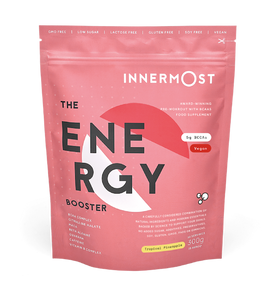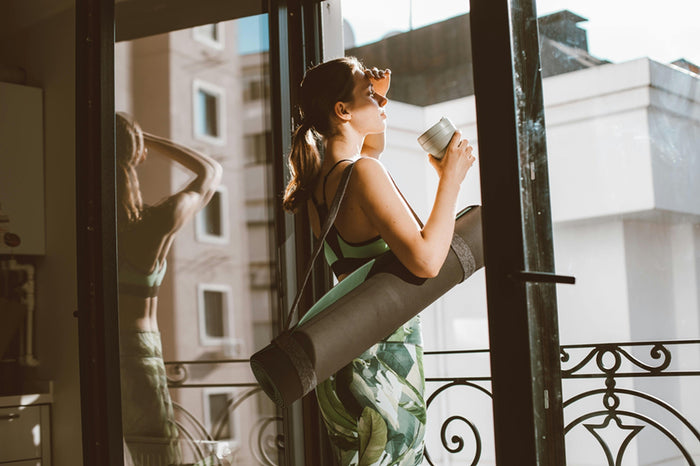The feeling of holding tension in your neck and shoulders can creep up on you. Maybe you reach for something on a high shelf and get an unexpectedly painful twinge. Or perhaps the low-level strain from sitting at a desk all day gives you a headache.
Whether your neck and back tension comes from too much 2am doomscrolling, the fact that you spend nine hours a day hunched over a laptop screen typing furiously or you that simply hold the tension of a stressful, ever-changing existence in your shoulders, no-one wants to be in pain at the end of the day.
This area of the body is particularly susceptible to tightness, tension and muscle soreness as it’s the location of a large number of joints and a lot of soft tissue. Many of us have sedentary jobs which means we’re not moving our bodies very much and instead spend most of our time scrunched forwards over a screen, blue light blaring into our eyes.
It’s not only your posture which can cause this pain. When you experience high stress levels, your rib cage can sometimes drop in position slightly, causing your upper back to round forward into an uncomfortable slouch.
To remedy this painful problem, we’ve put together this series of simple neck and shoulder stretches which will help to cure your tension and pain. It can be a good idea to practise some of these stretches throughout the day, to increase your range of motion. Make stretching as much a part of your routine as checking your email, and you’ll find you have less pain and less tension.

1. Correct your posture
Before we start stretching your shoulder blades and upper back, postural correction is our first stop. This gentle move increases blood flow to your neck and back.
Begin by standing as you usually would, then slouching slightly forwards. Then, stand up straight but overcorrect your posture so that your upper back has a slight bend. Repeat three- five more times, feeling the increase in circulation.
2. Neck rolls
Simple but effective, this neck stretch will help to relieve headaches and tense shoulders. Gently drop your head towards your right shoulder, and hold this position for 10-15 seconds. Slowly roll your neck down until your chin is on your chest, and then up to the left. Repeat several times in each direction before switching to the other side.
3. Shoulder rolls
Stand or sit up straight. Begin to slowly roll your right shoulder up, then back, then down in a fluid circular motion, then switch to a forwards circle. Repeat five-10 times in each direction before switching to the opposite side. Then do the same with both shoulders simultaneously.
4. Shoulder blade stretches
This stretch works your upper chest muscles and opens up those tight shoulders.
Reach your left arm upwards, holding it straight, then bend your elbow and let your forearm fall at the back of your neck. Reach your right arm up behind your back and, if you can, grasp your fingertips together. If you can’t reach, try holding one end of a small towel in the left hand and grasping the end of it with the other, then pulling it taut to stretch.
5. Reverse prayer pose
This yoga pose really opens up tight chest muscles and stretches your arms.
Take both arms behind your back, then bring your hands together into a praying position. You should feel your shoulder blades open. If you can’t quite reach a prayer position, try grasping your right elbow with your left hand and your left elbow with your right hand. Hold for 30 seconds.
6. Wall shoulder stretches
Place the palms of both hands on a wall, with your fingertips pointing straight upwards. Walk your feet back until your arms are straight and then bow forwards, bending from the hips. Hold for around 30 seconds before releasing.
7. Shoulder rotation
Stand with your back against a wall. Bring both of your elbows up so they’re at a 90 degree angle, with your hands hanging towards the floor. Without moving your elbows, bring your right arm upwards so that the back of your right hand touches the wall and simultaneously keep your left arm facing downwards, so your left plan is touching the wall.
Hold this position for a few seconds, then slowly switch positions so your left hands faces up and your right arms downwards. Repeat for 30 seconds to a minute.
8. Lower back hand clasp stretch
Bringing your hands behind your back, clasp your hands together by interlacing your fingers, with your thumbs pointing towards the floor. Your hands should be at the level of the small of your back. Gently arch your back, pushing your chest forwards and bringing your shoulder blades close together. Hold for 10-20 seconds before releasing, then repeat with your thumbs clasped the opposite way round.
9. Floor neck and shoulder stretch
Kneeling on all fours (you might want to bring your yoga mat out for this one), lift your right hand off the floor and thread it through the gap between your left and arm and left upper leg. Rotate your upper body so the back of your right hand and arm slide on the floor, but don’t twist your hips. Once you find your maximum rotation, hold the pose for around 30 seconds, before repeating on the other side.
So there you have a whole bunch of ways to loosen up those tense shoulders and alleviate pain and tension in the upper body. Take things a step further and check out The Relax Capsules, which contain ingredients proven to manage stress and improve sleep - a sure fire way to help to release held stress in the body.


















